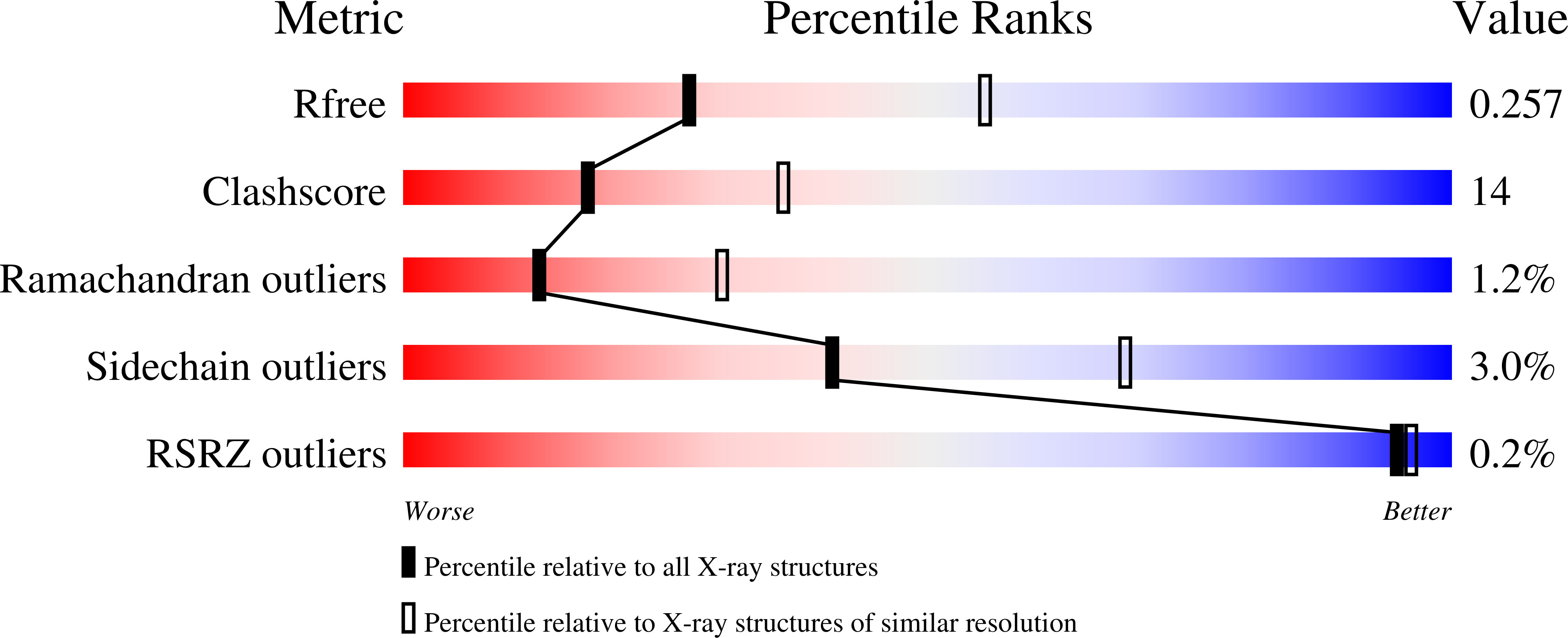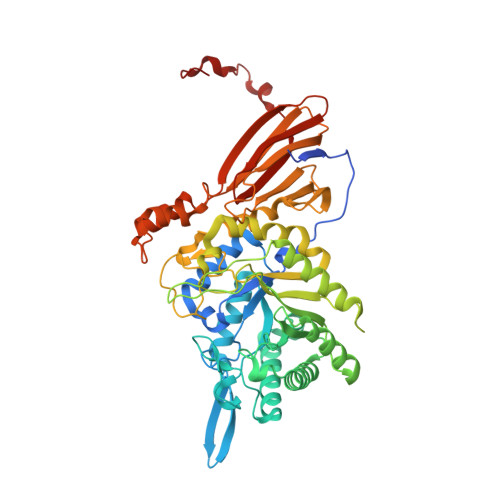Crystal structure of Dictyoglomus thermophilum beta-d-xylosidase DtXyl unravels the structural determinants for efficient notoginsenoside R1 hydrolysis.
Bretagne, D., Paris, A., de Vaumas, R., Lafite, P., Daniellou, R.(2020) Biochimie 181: 34-41
- PubMed: 33242495
- DOI: https://doi.org/10.1016/j.biochi.2020.11.017
- Primary Citation of Related Structures:
6YYH, 6YYI - PubMed Abstract:
Dictyoglomus thermophilum β-d-xylosidase DtXyl is attractive as a potential thermostable biocatalyst able to produce biologically active ginsenosides intermediates from β-(1,2)-D-xylosylated compounds, including Notoginsenoside-R1. DtXyl was expressed as an active N-terminal His-tagged protein, and its crystal structure was solved in presence or absence of d-xylose product. Modelling of notoginsenoside R1 in DtXyl active site led to the identification of several hydrophobic residues interacting in close contact to the substrate hydrophobic core. Unlike other residues involved in substrate binding, these residues are not conserved among GH39 xylosidase family, and their physico-chemical properties can be correlated to the efficient binding and subsequent hydrolysis of Notoginsenoside R1.
Organizational Affiliation:
Institut de Chimie Organique et Analytique (ICOA), UMR CNRS-Université d'Orléans 7311, Université d'Orléans, BP 6759, Orléans, 45067, Cedex 2, France.

















